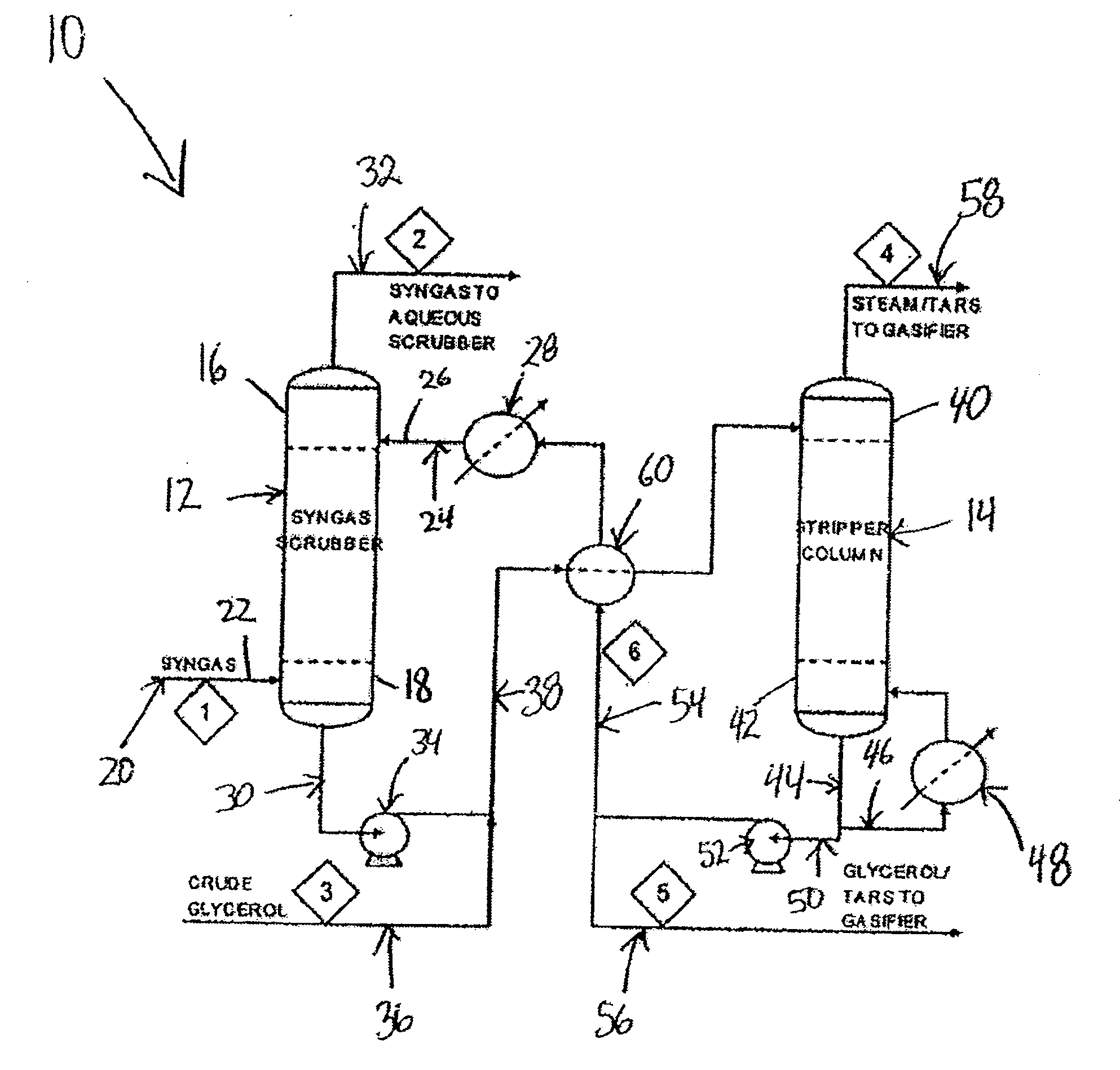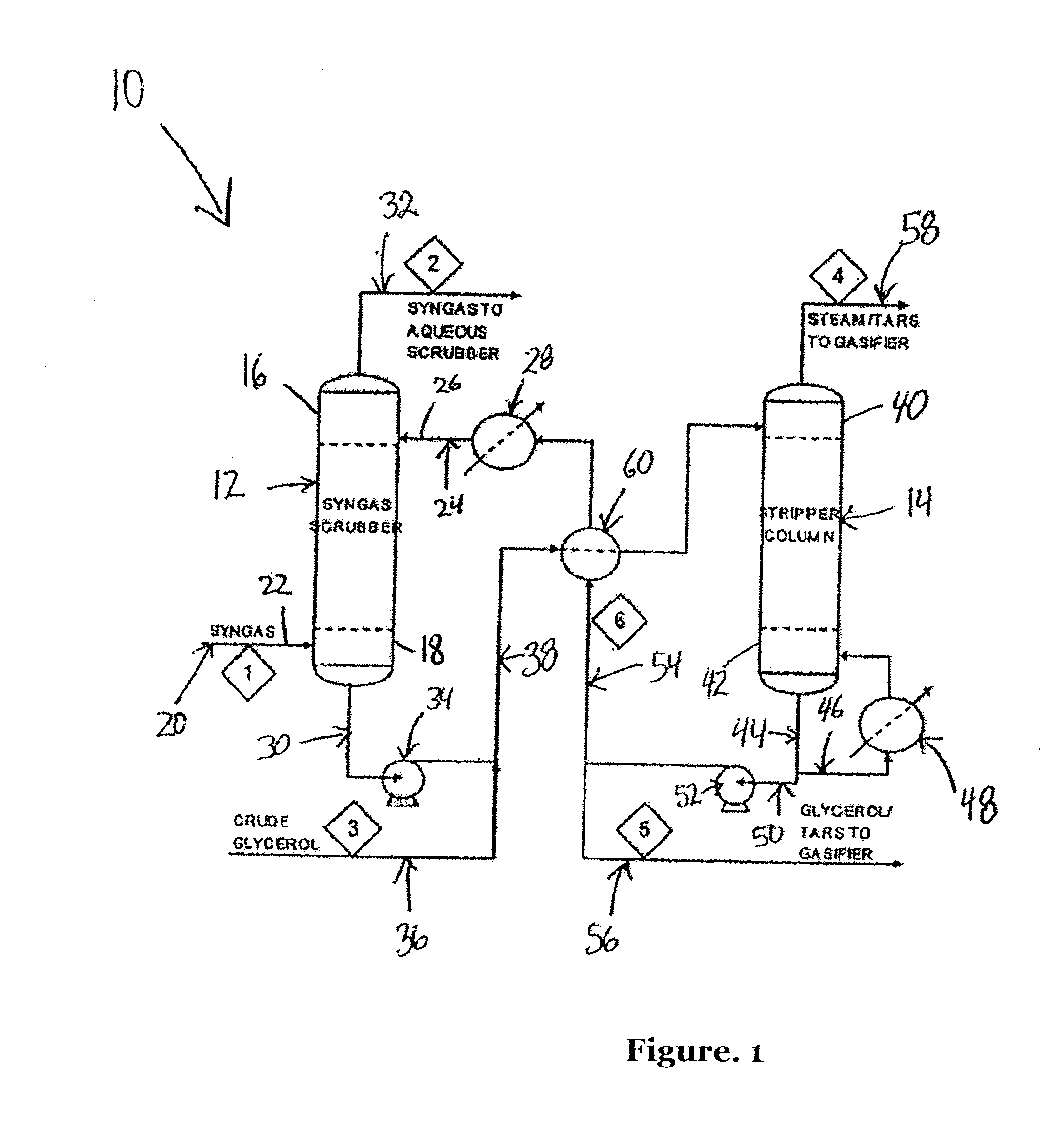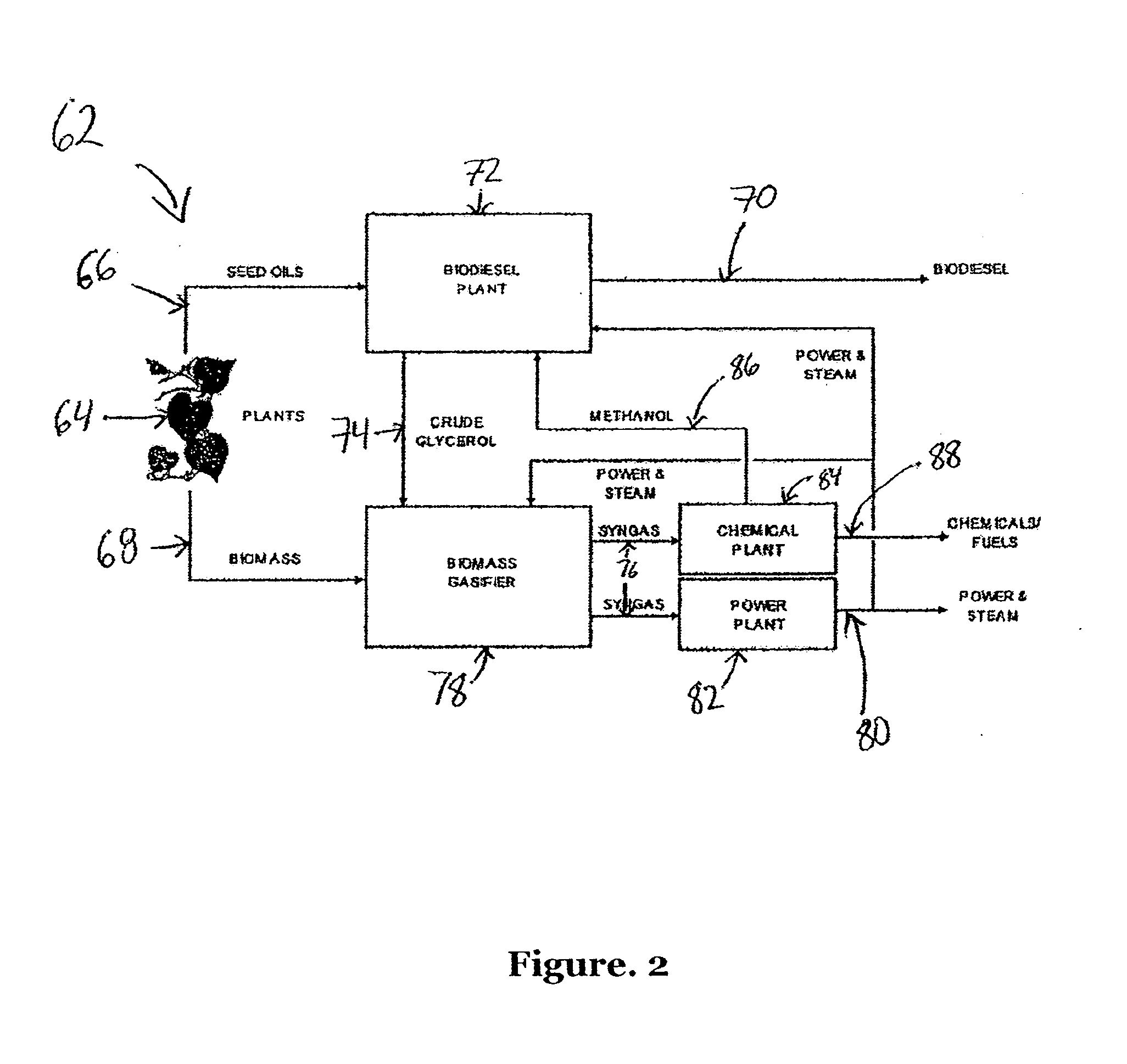Process for removing tar from synthesis gas
a synthesis gas and tar technology, applied in the field of biofuel production, can solve the problems of affecting the synthesis gas produced by aqueous scrubbing, tar is a significant impediment, and is not suitable for some power and all chemical applications
- Summary
- Abstract
- Description
- Claims
- Application Information
AI Technical Summary
Benefits of technology
Problems solved by technology
Method used
Image
Examples
Embodiment Construction
[0022]In FIG. 1 a system lo for removing tars from synthesis gas according to the present invention is shown. The system includes a non-aqueous scrubber column 12 and a stripper column 14. The scrubber column 12 includes upper and lower portions 16 and 18. The lower portion 18 of the scrubber column 12 is in communication with a source of synthesis gas 20 via a first feedline 22. The upper portion16 is in communication with a source of glycerol 24 via a second feedline 26 having previously passed through a heat-exchange and cooler 28. The lower portion of the scrubber column 18 includes an exiting bottoms stream 30 while the upper portion 16 includes an exiting overhead stream 32. The exiting bottoms stream 30 is pumped 34 into a line containing a crude glycerol stream 36 to form a combined stream 38. The exiting overhead stream 32 is sent to an aqueous scrubber.
[0023]Referring still to FIG. 1, the stripper column 14 includes upper and lower portions 40 and 42. The upper portion of ...
PUM
| Property | Measurement | Unit |
|---|---|---|
| wt % | aaaaa | aaaaa |
| flow rate | aaaaa | aaaaa |
| power | aaaaa | aaaaa |
Abstract
Description
Claims
Application Information
 Login to View More
Login to View More - R&D
- Intellectual Property
- Life Sciences
- Materials
- Tech Scout
- Unparalleled Data Quality
- Higher Quality Content
- 60% Fewer Hallucinations
Browse by: Latest US Patents, China's latest patents, Technical Efficacy Thesaurus, Application Domain, Technology Topic, Popular Technical Reports.
© 2025 PatSnap. All rights reserved.Legal|Privacy policy|Modern Slavery Act Transparency Statement|Sitemap|About US| Contact US: help@patsnap.com



